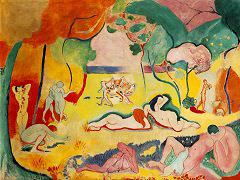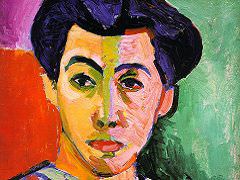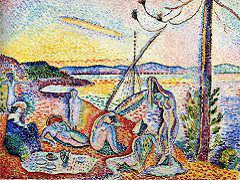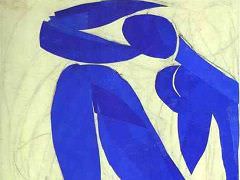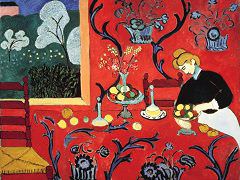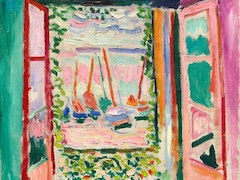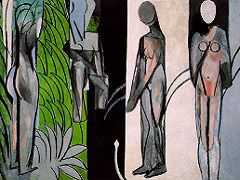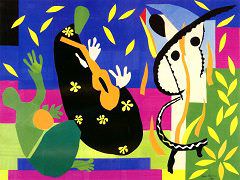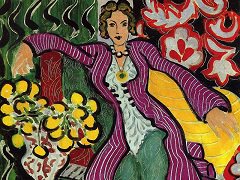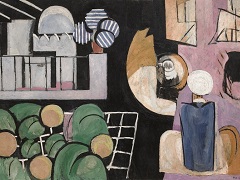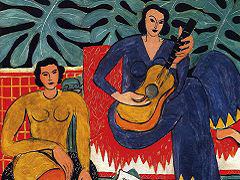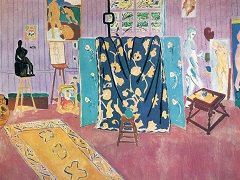The Artist and His Model, 1919 by Henri Matisse
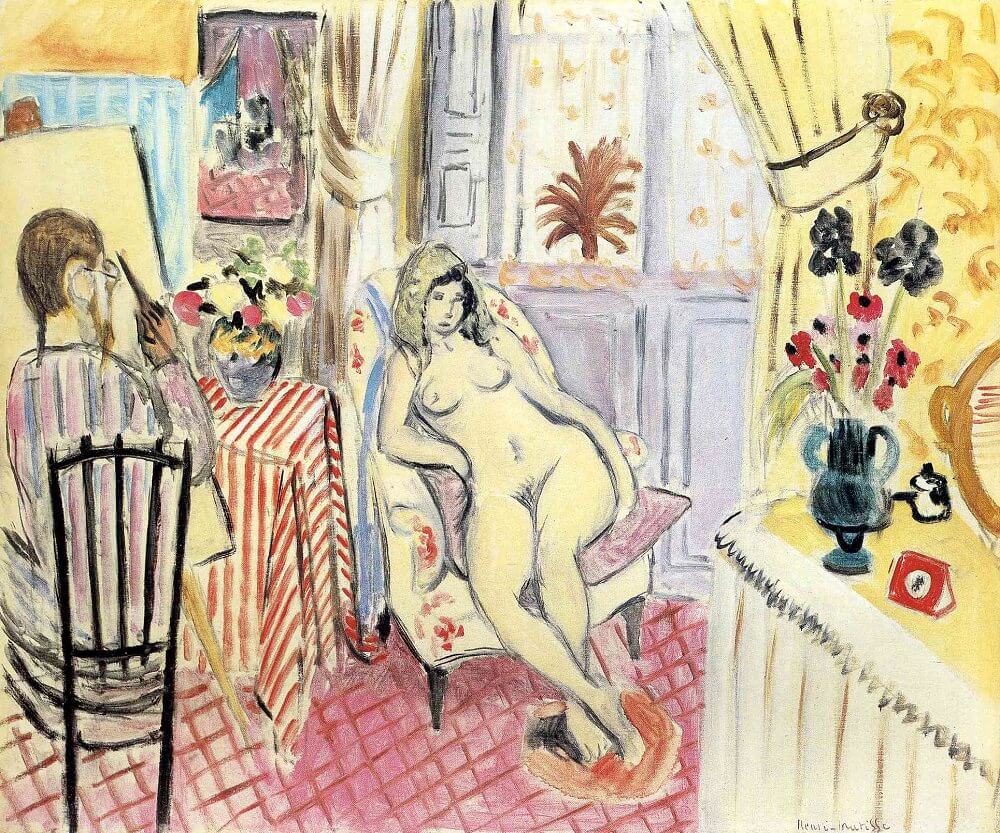
The Artist and His Model, 1919 would seem to indicate a slackening of intensity, a detente in which the artist gives himself over to hedonistic self-indulgence. Nothing could be further from the truth. The politics of the avant-garde, especially of the Dadaists, Surrealists, and Abstractionists of the 1920s and later, dictated that Matisse would be one of those painters castigated for having capitulated to a public willing to accept tame modernistic paintings, and for working for this market rather than plunging ahead into more obvious frontiers of visual and metaphysical speculation. But this essentially political criticism takes no account of Matisse's own private growth over the two previous decades (nor could these critics, of course, foresee where he would wind up three decades later). Hence this negative view is fundamentally irrelevant to Matisse's work and the necessity for a modification of his style at this crucial juncture. In terms of the inner coherence of his evolving career, Matisse pushed relentlessly onward all through the twenties.
The design of this picture is complex yet sturdily ordered, and the nuances of color and tone demanded a supple, almost creamy texture to the paint, in opposition to the fiat, sometimes indifferently brushed-in areas in some immediately preceding masterpieces. The break with Neo-Cubism, which had stiffened the structure of his large works of the period 1910-17 and which is immediately apparent in the contrasting versions of The Music Lesson, was necessary to further growth. The reduced size of his pictures at this period reflects not exhaustion but a change in environmental circumstances. He was working in small improvised studios set up in hotel rooms, rather than in the large permanent establishment at Issy or in his old Paris studio on the Quai Saint-Michel. The seductive outlining of the model here should be compared with that of Carmelina, and indicates a new and more intimate feeling for the natural, spontaneous poses of the female form. Matisse is here in such possession of his painterly faculties that he can do without the arbitrary stiffness of conventional studio poses.

